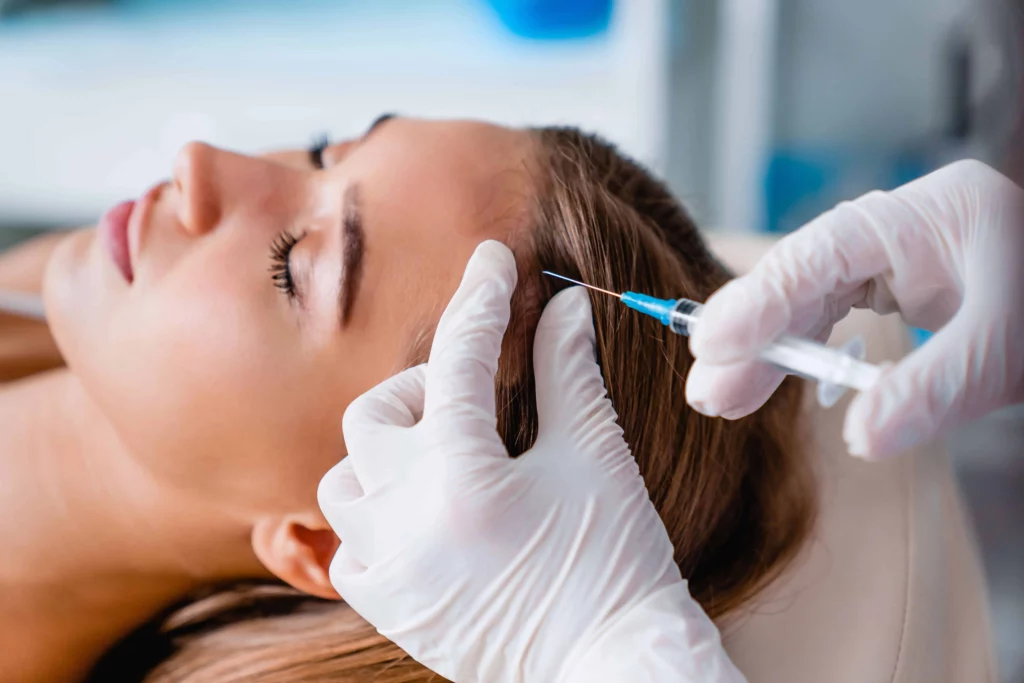
Hair loss and thinning are common issues faced by millions of individuals across the globe. They can stem from various causes, including genetics, stress, hormonal imbalances, poor nutrition, and even environmental factors. While hair loss used to be seen as inevitable, especially with age, modern medical innovations now offer promising solutions that go beyond traditional methods. One such innovation that has gained significant attention is platelet rich plasma hair treatment, a technique that uses the body’s natural healing ability to rejuvenate hair follicles and restore hair growth.
Understanding the Science Behind PRP
To truly grasp the potential of this treatment, it’s essential to understand what PRP is. Platelet Rich Plasma, or PRP, is a concentration of platelets derived from the patient's own blood. These platelets are rich in growth factors—proteins that play a crucial role in healing and regeneration. In PRP therapy, a small sample of the patient’s blood is drawn and spun in a centrifuge to separate the platelet-rich component from other blood elements. The resulting plasma is then injected directly into the scalp, targeting areas where hair is thinning or has stopped growing.
The goal of these injections is to stimulate the hair follicles, encouraging them to enter the active growth phase known as the anagen phase. The growth factors in PRP improve blood supply to the follicles and extend the survival of hair cells, ultimately leading to increased hair density and thickness.
Why PRP Is Gaining Popularity
What makes PRP particularly appealing to both doctors and patients is its natural, minimally invasive approach. Because the plasma is derived from the patient’s own blood, the risk of allergic reactions or rejection is extremely low. Unlike medications or surgical transplants, PRP therapy doesn’t introduce foreign substances into the body, and recovery times are typically minimal. Most patients experience only mild discomfort during the procedure and can return to their normal activities the same day.
Additionally, PRP is considered a versatile solution. It can be used on both men and women experiencing various degrees of hair thinning. While the treatment may not be effective for completely bald areas or advanced stages of hair loss, it has shown considerable success in revitalizing dormant follicles and slowing down further hair shedding.
What to Expect During and After Treatment
The PRP hair treatment process is relatively straightforward and usually completed within an hour. After the initial blood draw and centrifugation, the concentrated plasma is injected into the scalp using fine needles. Most clinics recommend a series of treatments—typically once a month for three to four months—followed by maintenance sessions every few months, depending on individual response.
Results can vary from person to person, but many patients begin to notice reduced hair shedding within a few weeks of starting treatment. Visible improvements in hair thickness and texture usually become apparent within three to six months. Continued maintenance is essential for sustaining these results, as PRP is not a permanent cure but rather a long-term management solution.
It’s also important to set realistic expectations. While PRP can significantly improve hair quality and density, it may not completely reverse all types of hair loss, particularly if the follicles have been inactive for a long period. Consulting with a qualified dermatologist or trichologist before beginning treatment is crucial for determining whether PRP is the right option for your specific condition.
Safety, Side Effects, and Considerations
Since PRP uses the patient’s own biological material, it is generally considered a safe procedure. However, as with any medical treatment, there are potential side effects. These can include mild swelling, tenderness, redness at the injection site, and temporary scalp discomfort. Serious complications are rare, but they can occur if the procedure is not performed by a trained professional using sterile equipment.
Patients with certain medical conditions—such as blood disorders, active infections, or autoimmune diseases—may not be suitable candidates for PRP. A thorough medical history and diagnostic evaluation are essential before starting the procedure. It’s also worth noting that PRP results are gradual and cumulative, meaning patients must be patient and committed to the treatment plan.
The Future of Hair Restoration
The field of hair restoration has evolved significantly over the past decade, and PRP therapy stands out as one of the most promising advancements. Unlike traditional approaches that merely conceal or temporarily fix the problem, PRP aims to tackle hair loss at its root—by nourishing and revitalizing the hair follicles themselves.
Research into PRP continues to expand, with ongoing clinical trials exploring ways to enhance its efficacy. Some studies are combining PRP with other regenerative techniques such as microneedling, stem cell therapy, or laser treatments to boost results. The future may bring even more personalized and effective treatment protocols as our understanding of hair biology deepens.
For many individuals seeking a non-surgical, low-risk alternative to regain their confidence and restore their natural appearance, PRP offers a scientifically backed and clinically proven path forward. It’s not just about aesthetics—it’s about feeling empowered in your own skin, free from the burden of thinning hair.
Conclusion
Hair loss and thinning no longer have to be accepted as unchangeable facts of life. With innovations like PRP therapy, individuals now have access to safe, effective, and minimally invasive treatments that can significantly improve hair health and self-esteem. As with any medical treatment, it’s important to consult with professionals, understand the process, and commit to a realistic regimen. For those who qualify, this therapy represents more than a cosmetic improvement—it’s a regenerative approach rooted in the body’s own healing power.
Comments on “Platelet Rich Plasma Hair Treatment: A Revolutionary Solution for Hair Loss and Thinning”